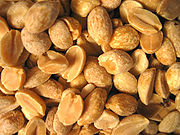 Analogy between oral immunotherapy (OIT) and subcutaneous immunotherapy (SCIT)
Analogy between oral immunotherapy (OIT) and subcutaneous immunotherapy (SCIT)Office-based oral immunotherapy (OIT) for food allergy is safe and effective, according to an allergist group from Texas. The only death caused by OIT occurred during a formal trial at an academic center and was caused by a dosing error. Many more deaths have resulted from accidental exposure. The group experience represent the completed treatment of more than 175 patients.
Similar concerns have been raised in the treatment of allergic rhinitis by subcutaneous immunotherapy (SCIT), a treatment that was introduced more than a century ago and is one of the cornerstones of therapy for the specialty of allergy. In fact, the comparison of SCIT to OIT is quite revealing. Although the benefits of SCIT for airborne allergens are unquestionable, this treatment modality is not lifesaving but rather improves the quality of life.
Experts: Oral immunotherapy (OIT) is not ready for prime time
Oral immunotherapy (OIT) is not ready for prime time, say the leading experts in the field of food allergy.
In oral desensitization to peanut, adverse reactions requiring epinephrine occurred in 43% of patients. Overall, 32% of patients with food allergy were unable to continue.
Further investigation must address the less common but potentially more disabling consequences of OIT, such as eosinophilic esophagitis and other delayed-type reactions.
8 top allergens account for 90 percent of food allergies. Serum IgE levels (sIgE) that predict the likelihood of passing an oral food challenge are shown in the figure. (click to enlarge the image).
References
Office-based oral immunotherapy for food allergy is safe and effective. The Journal of Allergy and Clinical Immunology, Volume 127, Issue 1 , Pages 290-291, January 2011.
Oral immunotherapy: Ready for prime time? The Journal of Allergy and Clinical Immunology, Volume 127, Issue 1 , Pages 289-290, January 2011.
Oral immunotherapy: Ready for prime time? The Journal of Allergy and Clinical Immunology, Volume 127, Issue 1 , Pages 289-290, January 2011.
Reply. The Journal of Allergy and Clinical Immunology, Volume 127, Issue 1 , Pages 291-292, January 2011.
Sublingual and oral immunotherapy for milk allergy. Desensitization was lost in some cases within 1 week off therapy. JACI, 2011.
The place of oral desensitization in the practice of allergy at this time is in flux - see why: http://goo.gl/gNKLD
Image source: Roasted peanuts as snack food, Wikipedia, public domain.
Sublingual and oral immunotherapy for milk allergy. Desensitization was lost in some cases within 1 week off therapy. JACI, 2011.
The place of oral desensitization in the practice of allergy at this time is in flux - see why: http://goo.gl/gNKLD
Image source: Roasted peanuts as snack food, Wikipedia, public domain.